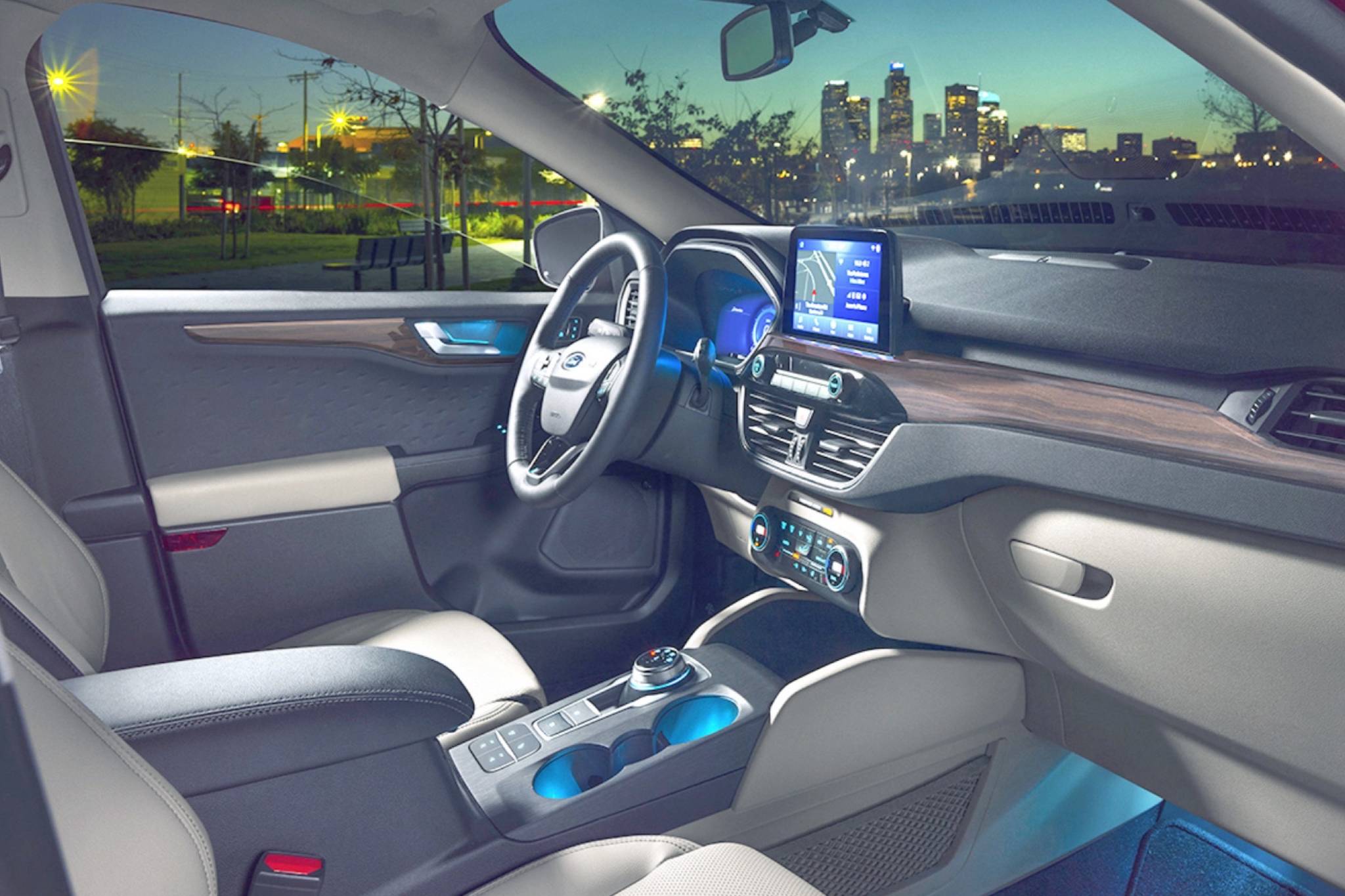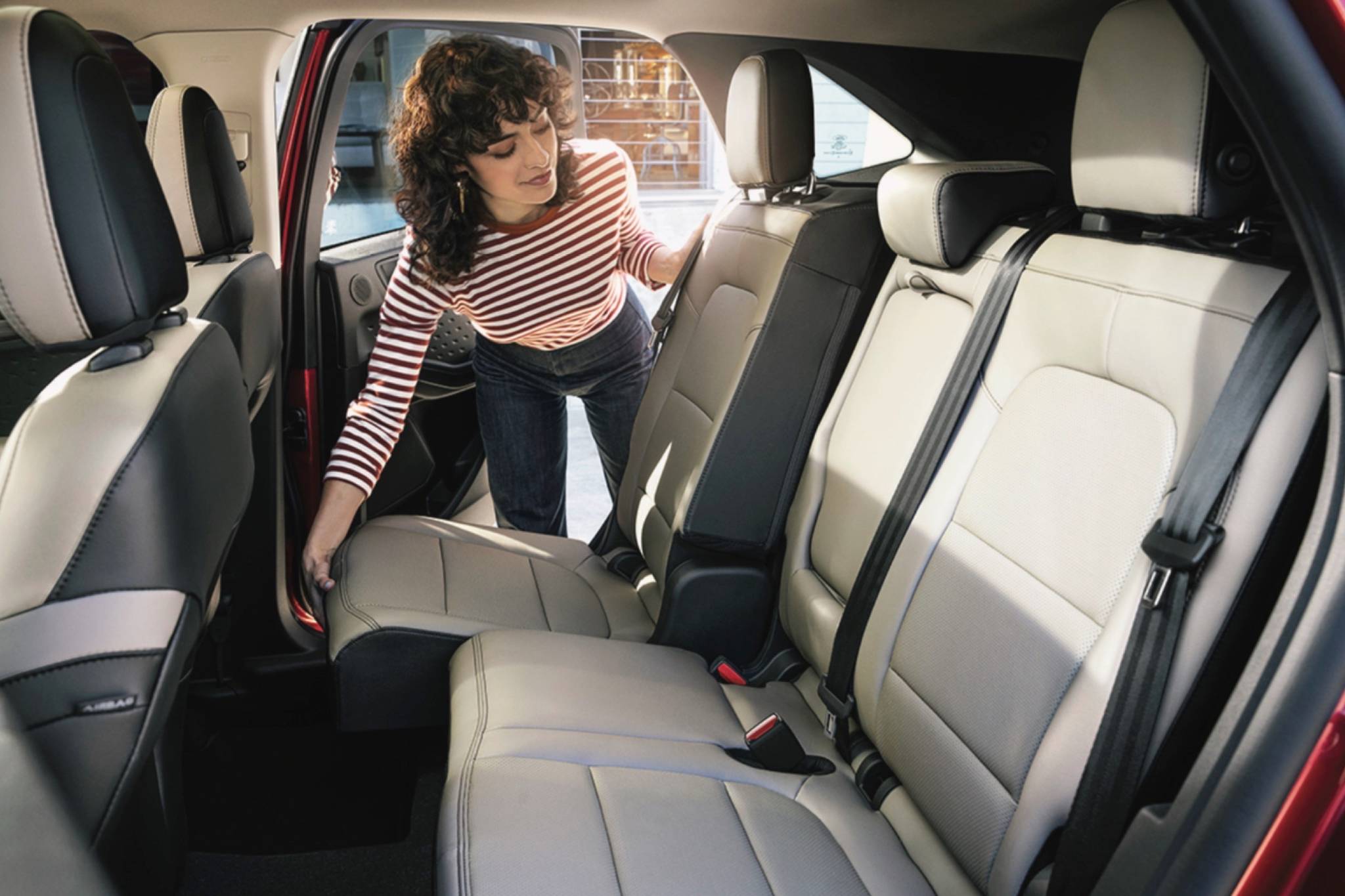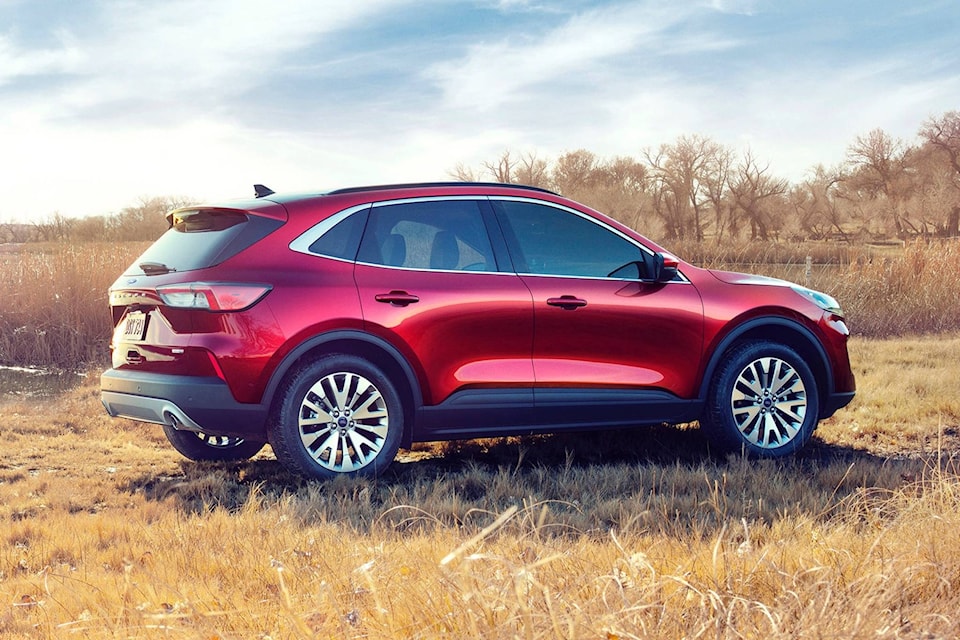It seems that the big and beefy look for everything other than sedans and minivans is de rigueur in the design studios of many automakers. Bucking this copycat trend is the fourth-generation Escape — now available as a hybrid — which has been taken down a kinder, gentler path.
To say that the new model is a radical departure from previous Escapes is the grossest of understatements. Instead of creases and right angles, the low-slung body is all about curvy shapes.
It’s almost as if the stylists looked to the bubble-shaped first-generation Taurus sedan for inspiration. A bonus is the enlarged front and side glass, which is yet another departure from the current crop of utility models.
According to Ford, the Escape is now lighter by about 100 kilograms, despite the larger size. Overall length increases by slightly more than six centimetres, the width is up by about five centimetres and the distance between the front and rear wheels grows by nearly 2.5 centimetres. Owing to the new Escape’s lower profile, height is reduced by six centimetres, although maximum cargo volume has been enlarged.
The cabin has also been brought up to date in a trendy way. A rotary knob replaces the shift lever for the transmission, a touch-screen sticks out of the dashboard (instead of being built into it), and drivers can reconfigure the available 31-centimetre electronic gauge and info cluster according to their personal preferences.
The rear seat can be adjusted fore and aft by a few centimetres for greater legroom (or to create more cargo space), or folded flat.
For 2020, the Escape replaces the base 168-horsepower 2.5-litre four-cylinder with a turbocharged 1.5-litre three-cylinder that makes 181 horsepower and 190 pound-feet of torque. Cylinder deactivation, which is unusual for a three-piston powerplant, shuts down one of the cylinders during flat-surface, steady-state cruising (and coasting) to conserve fuel.
Optional is a 2.0-litre turbo four-cylinder that puts out 250 horsepower and 280 pound-feet.
The big news in the powertrain department, however, is that the Escape is now available as a gasoline-electric hybrid and as plug-in hybrid. The meat of the system is a 2.5-litre four-cylinder and a helper electric motor.
Compared with the previous Escape hybrid from the 2012 model year, the lithium-ion battery pack is one-third the size. The new system puts out a net 200 horsepower, or 221 horses for the plug-in hybrid variant that can travel up to 50 kilometres before the gasoline engine kicks in. Recharging takes up to 11 hours using standard household current, and about 3.5 hours when connected to a 240-volt charge port. The powertrain is linked to a continuously variable transmission.
The hybrids have four modes, including Auto EV that decides whether to run on internal-combustion or electric power, and an EV Charge mode which charges the battery while driving so that electric-only kilometres can be built up for later use.
The hybrid is available in front- and all-wheel-drive, depending on the model selected, but be aware that the plug-in version is front-wheel-drive only. As well, the sliding-rear-seat feature is available only for non-hybrid models.
Pricing for the Escape starts at $30,500 (including destination charges) for the base front-wheel-drive S trim. It arrives with most basic features plus a full suite of active-safety technology curated under Ford’s Co-Pilot360 banner.
The SE gets dual-zone climate control, heated front seats (10-way power-operated for the driver) and push-button start, while the SEL adds premium seat covers, hands-free power liftgate and a backup sensor.
Along with the turbo 2.0 four-cylinder, the top-end Titanium trim comes with all-wheel-drive, leather-trimmed seats and a 10-speaker Bang and Olfusen-brand sound system.
Note that both hybrid models only come in Titanium trims.
If being different (and driving different) from the rest of the pack is important, the new Escape, with its distinctive silhouette and a variety of propulsion choices, is a way to decisively make that statement.
What you should know: 2020 Ford Escape
Type: Front- /all-wheel-drive compact utility vehicle
Engines (h.p.) 1.5-litre DOHC I-3, turbocharged (181); 2.0-litre DOHC I-4, turbocharged (250); 2.5-litre DOHC I-4 with electric motor (200/221)
Transmissions: Eight-speed automatic; continuously variable (hybrid)
Market position: Compact and midsize utility vehicles make up a growing portion of sales for many automakers. In Ford’s case, it is ceasing production of four-door sedans almost entirely.
Points: Unique design eschews the squared-off shapes embraced by most competitors. • Bigger than before, and lighter. • Both regular hybrid and plug-in hybrid provide greater power and range than previous iterations. • Ford is banking on buyers accepting a less-stout-looking (more car-like) utility vehicle.
Active safety: Blind-spot warning with cross-traffic backup alert (std.); active cruise control (std.); emergency braking (std.); pedestrian detection (std.)
L/100 km (city/hwy): 8.6/7.1 (1.5, FWD); Base price (incl. destination) $30,500
BY COMPARISON
Honda CR-V
Base price: $30,600
One of the roomiest models in its class. Hybrid version is available for 2020.
Toyota RAV4
Base price: $29,900
Fresh and edgy styling, peppy engine, and available as a hybrid.
Mazda CX-5
Base price: $30,000
Recent redesign improves on what was already a solid choice in this class.
If you’re interested in new or used vehicles, be sure to visit TodaysDrive.com to find your dream car today!
-written by Malcom Gunn, Managing Partner at Wheelbase Media
Like us on Facebook and follow us on Instagram





